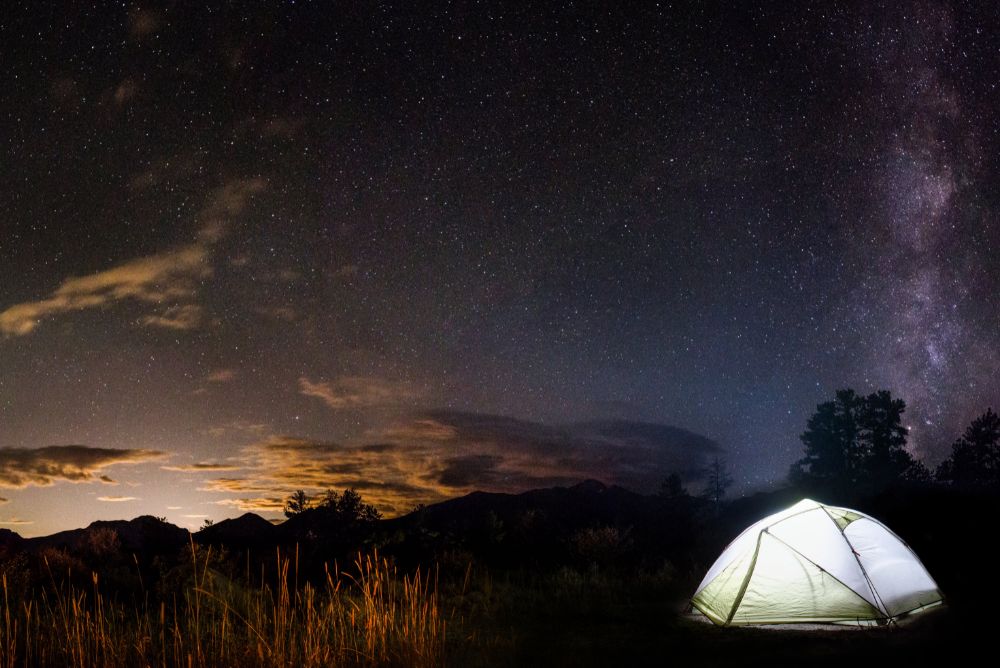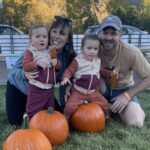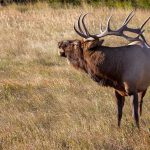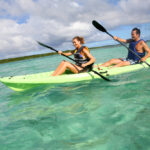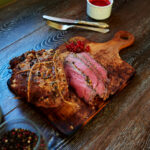Rocky Mountain National Park, Colorado, is one of the highest-elevated national parks in the United States. Its picturesque views make it perfect for any outdoor expedition, whether that be camping or hiking.
One of the most popular activities at Rocky Mountain is backcountry camping, which means camping off the grid!
However, if you’ve never gone backcountry camping at Rocky Mountain before or aren’t quite sure what to expect, you’ll need some advice on where to start. Thankfully, we’ve got all of the necessary information for you here.
This article will cover:
- How you can prepare for your trip
- The best areas for backcountry camping in Rocky Mountain National Park
- A few tips for staying safe while backcountry camping.
Let’s get started with some ways you can prepare for your trip!
Preparing For A Backcountry Camping Trip In Rocky Mountain National Park
Backcountry camping in a location as scenic and wild as the Rockies is one of the best experiences out there!
However, before you set out and explore, here are a few things you should do to prepare!
Obtain necessary permits in advance
One of the most important parts of preparing for your trip is making sure you have all your permits organized. These tend to get booked out fast, so make sure you prepare in advance!
Rocky Mountain National Park requires all visitors to have a Wilderness Permit to camp overnight in the Park, and you’ll also need to obtain a Park Pass or Entrance Fee which you can get online.
The Wilderness Permit is required year-round to go camping. This is to help preserve the character of the Park and protect the natural wildlife. You can get a Wilderness Permit from Recreation.gov.
It’s also important to note that the Park has introduced a timed-entry permit system during the busy season to ensure it isn’t flooded with visitors.
Make sure you get this sorted before your trip so you don’t miss out! You can make a reservation through Recreation.gov.
#1 Research and plan your route thoroughly
Another thing you’ll need to do is research and plan ahead. Rocky Mountain has plenty of different routes for beginners as well as more experienced mountaineers, so there’s something for everyone.
Planning ahead is the best way to protect yourself and others from the unexpected when you’re out in the park.
Make sure you map out your route and any potential camping spots before you head out. Once you have a plan, get it checked out with a visitor center or a local guide; a good way to start is by checking out a map.
#2 Pack lightweight, high-quality gear
Because you’ll have to carry your gear on your back, you’ll only want to bring the essentials and ensure they’re lightweight.
The basic things you’ll need for backcountry camping are a tent, a light source, a sleeping bag, and a sleeping pad. Don’t forget your toiletries!
Another important thing you’ll need to do is test your gear before you head out. It’s no fun getting deep into the bush and realizing your tent is missing a pole.
You can do this by setting up your tent before you head out as well as testing your cooking equipment.
#3 Bring appropriate clothing for changing weather
Mother nature is sure to kick up a fuss at the worst times, so make sure you have that raincoat and extra layer! Check the forecast before you head out, and make sure you pack according to the season.
#4 Carry sufficient food and water
This may sound obvious, but having enough food and water is vital to your trip. Make sure you have enough to last you the length of your journey, then enough for at least one extra day, in case things change on the trail.
If you’re not used to cooking in the wilderness, it’s best to start by going simple. Think of freeze-dried meals, pasta, or veggies.
In warm weather, you might be able to get away with not bringing food you need to cook, such as sandwiches, nuts, cheese, fruit, and cereals.
However, in the colder months, make sure you bring food and drink that’ll help keep you warm such as instant soups, tea, and hot cocoa.
#5 Use a bear-resistant food storage container
Rocky Mountain National Park requires you to use a bear-resistant food storage container while camping. Using a bear container is an easy way to deter bears from your food, and it keeps not only you but the bears safe too!
You can purchase or rent a bear-resistant food canister from a sporting goods store in nearby Estes Park or Grand Lake.
#6 Pack a first aid kit and necessary medications
Another important step to prepare is to make sure you pack a first aid kit. It doesn’t need to be extensive, but make sure you have things like medications, painkillers, and bandages.
Also, brush up on some first aid skills, a simple cut can easily get infected, and knowing how to deal with burns or bug bites is an important skill for backcountry camping.
#7 Bring navigation tools (map, compass, GPS)
Brush off those orienteering skills, being in the wilderness means you can’t rely on Google! Always have an updated map with you and a compass. You can’t always rely on a GPS, so having another way to navigate is a must.
#8 Inform someone about your trip itinerary
Before you head out, make sure you get your itinerary checked over by local guides. They’ll let you know if your trip is feasible for your skill level and any things you might have missed.
It’s also important to let someone you trust who’s not coming with you about your trip. Let them know when you’re expected to return so that they can check on you.
#9 Practice Leave No Trace principles
Leave No Trace principles help preserve the wilderness and keep you safe. The basic rule of thumb is that you need to leave nature as you found it to minimize your environmental impact.
There are seven straightforward principles that you can use to help prepare for your trip. For more information, check out the official website!
Best Areas For Backcountry Camping Near Rocky Mountain National Park
You’ve learned what you should do beforehand, and now you’re scouting for the best areas to set up camp.
Looking for ideas? Check out this list of the places you should definitely have on your camping list!

General Information About The Campsites
Each wilderness campsite is located about a mile apart from the others and is easy to locate with the help of signposts.
There isn’t much in terms of amenities, but you can always expect there to be a stream nearby as a water source. Some campsites may have fire pits or pit toilets you can use.
#1 Wild Basin Area
Named after its range of plants and wildlife, the Wild Basin Trailhead is most popular for its stunning waterfalls and boasts plenty of flowing rivers, dazzling lakes, and alpine views.
Located in the southern part of Rocky Mountain National Park, it’s less popular but a decent area if you fancy solitude.
There are a range of places to camp near lakes, some popular ones include:
- Finch Lake (2 – 3 days) 9 – 14 miles: fall aspens, scenic lake views: hiking, good for wildlife spotting.
- Ouzel Lake (2 – 3 days) 10 – 15 miles: subalpine lake, scenic views, waterfalls; top fly-fishing destination, also good for hiking and wildlife watching.
- Thunder Lake (3 – 4 days) 12 – 20 miles: subalpine forest, scenic views; hiking, and good views.
#2 Longs Peak Campground
Located south of Estes Park, Longs Peak Campground is a tents-only campground that provides access to plenty of hikes around Longs Peak.
There are plenty of hikes with a range of difficulty, such as the Keyhole on Longs Peak – one of the most difficult climbs in the Park.
Visitors here can expect to see scenic mountain views; however, the campground is only open during the summer months from mid-July. You’ll need to bring your own drinking water here!
#3 Glacier Gorge Campground
Adjacent to Estes Park, the campground at Glacier Gorge is available year-round to provide stunning views of the alpine forest.
This campground has more amenities than most, with flush toilets and drinking water provided. The area is popular with families and large groups.
There are plenty of activities to do nearby, such as fishing, hiking, and horseback riding. There are also lots of scenic drives, and the nearby Estes Park provides dining, shopping, golfing, fly fishing, and many other activities.
This campground is a good starting point for Glacier Gorge, which has plenty of locations for backcountry camping along the trail.
#4 East Inlet
The East Inlet Trailhead can be reached through the town of Grand Lake.
There are eight backcountry campsites along the East Inlet Trail, which offer plenty of spectacular views and opportunities for wildlife spotting. This trail is more isolated than others but gets busy during the summer.
#5 North Inlet
The North Inlet Trailhead is located on the northwest side of Grand Lake and has plenty of campsites.
The area allows access to hikers seeking Lake Nanita and Lake Nokoni, but there are also many stunning views of waterfalls, rivers, and lakes in the area.
#6 Upper Beaver Creek Campground
This campground is close to the Beaver Creek reservoir, which makes it a perfect spot for fishers. Like every other spot, there are plenty of trails to go hiking and even hunting.
The Upper Beaver Meadows Loop provides scenic views, fall aspens, and plenty of wildlife.
#7 Tonahutu Creek
This campsite is perfect for hikers doing the Tonahutu Creek Trail and the North Inlet Loop. It’s quite isolated, but there’s plenty of wildlife hanging around and stunning views, so it’s worth the trip.
#8 Andrews Creek
Along Andrews Creek and above The Loch, you’ll find a single campsite that will allow you to explore Andrews Tarn – the meltwater lake below Andrews Glacier.
This campsite is perfect for climbing the glacier and is also close to Glacier Gorge. It’s popular, so make sure you book early.
#9 Sprague Lake
Nearby the scenic Sprague Lake, you can access a few wheelchair-accessible campsites.
It can accommodate 12 campers with up to 5 wheelchairs, and amenities include a vault toilet and a fire ring.
Tips for staying safe while backcountry camping
There’s little doubt that backcountry camping is one of the most rewarding ways to enjoy Rocky Mountain National Park. However, don’t get too carried away! With how dynamic the Rockies are, it’s important to keep yourself safe.
- Plan your route and stick to it: Planning ahead is the easiest way to prepare for an emergency, even if it’s something as simple as taking an extra day to sightsee. Map out your route and stick to it. Always be prepared for something to go wrong!
- Have a first-aid kit: Having a first-aid kit is vital to your safety. Make sure it’s always restocked before you leave and that you have spares of prescription medication.
- Find good shelter: Make sure you always have a roof over your head at your campsite, whether it’s a tent or a tarp. This not only protects you from the elements but also keeps you warm.
- Carry extra layers: This is especially important during the colder months but can also be important during the shifting seasons. You never know when you might need that extra sweater!
- Be cautious around strangers: Even if you’re just being friendly, it’s important to be wary. This is especially important if you’re going solo, as it puts you more at risk. Be kind, but be cautious. Remember: you don’t owe anyone your time of day.
FAQs
Is backcountry camping allowed in Rocky Mountain National Park?
Yes, as long as you have a Wilderness Permit. This is to help protect the natural landscape of Rocky Mountain, and ensures you can keep coming back to enjoy the sights!
Can I camp anywhere in Rocky Mountain National Park?
No, you’ll need to reserve specific campsites before you go. Make sure you do this in advance so you’re not left stranded!
Is it safe to backcountry camp alone?
Yes, as long as you’re well-prepared. This means having working emergency plans and always letting someone know where you are going in case something happens to you.
Are there bears in Rocky Mountain National Park?
Yes, but only black bears – no grizzly bears to be found! Black bears tend to avoid humans, so you have nothing to worry about. In fact, there’s only a population of around 20 – 30 bears in Rocky Mountain National Park, so the chances of running into one are quite slim.
What is the best time for backcountry camping in Rocky Mountain National Park?
The most popular time to go backcountry camping is during summer between May to October. However, this is also the busy season, so make sure you plan ahead!

